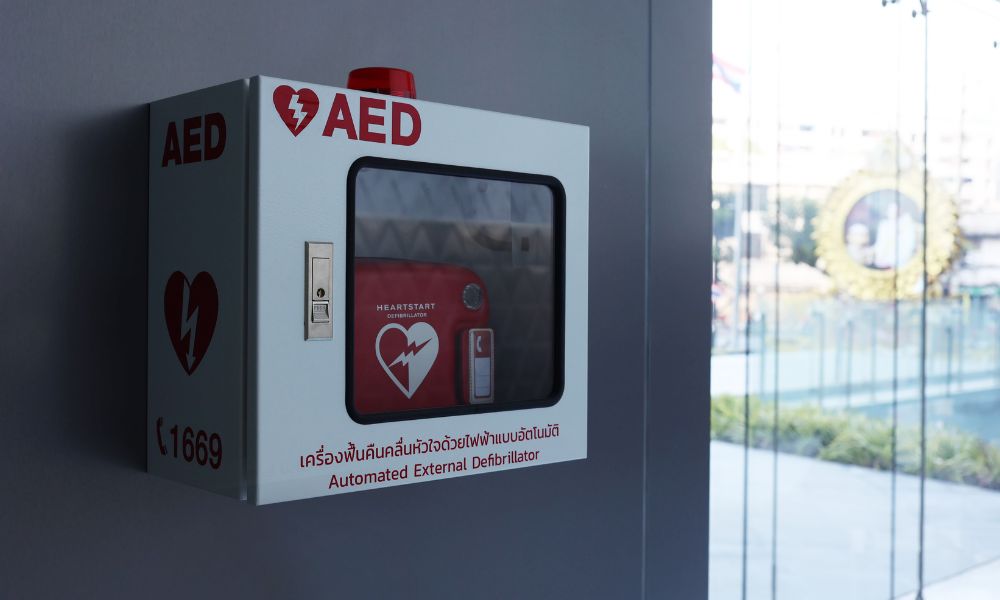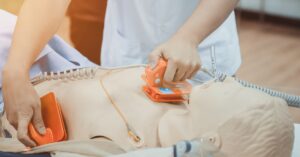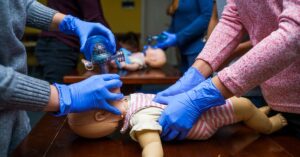Automated external defibrillators, also known as AEDs, are life-saving tools that help re-establish a healthy heart rhythm. Due to highly exaggerated medical dramas, you may have seen defibrillators before, but television depicts a harmful stereotype that often prevents bystanders and witnesses from taking action. To help dispel some of these myths and misconceptions, let’s take a look at what an automated external defibrillator actually is, when to use one, and other helpful information.
What Is an AED, and What Does It Do?
The sinoatrial node, also called the SA node, is located on the upper wall of the right atrium of the heart and generates electrical impulses, controlling the heart’s rhythm. When a person needs an AED, it does not mean the heart has stopped entirely (cardiac arrest) but rather is experiencing a life-threatening arrhythmia.
An AED provides an electrical shock to the wall of the heart, not to start the heart but to reset the node and, therefore, reset the heart’s rhythm. Think of an AED less as a “start” button and more like the “refresh” button on a computer. If you’ve ever experienced technology troubles and were told to “turn it on and off again,” this is an apt metaphor.
When Should You Use an AED?
An AED can only be used when a patient is in cardiac arrest. So, medically, the patient is not living. The purpose of the AED is to restore a normal heart rhythm. Ideally, you should use an AED as soon as possible. This is because when the heart isn’t beating, essential organs aren’t receiving the proper blood flow and oxygen they need to survive. The brain can only go without blood flow for approximately four minutes before permanent brain damage occurs.
It should also be noted that you cannot hurt a person with a defibrillator—the pads will determine whether the heart needs the shock. If you see a person is unconscious, place the defibrillator pads first and asses later to ensure you’re not wasting precious time.
How Do You Use an AED?
Fortunately, using an AED is easy, and you don’t need years of medical training to use one. Thanks to modern technology, there are now two main categories of defibrillators: automatic and semiautomatic. Both AEDs will give you clear pictures and instructions telling you where to place the pads and exactly how to proceed so you can follow the prompts as needed.
The first step is to peel away the backing from the pads and place them on a person’s bare chest. Adult pads should be used on anyone 8 years or older and child pads on anyone 1 to 7 years old. Once the pads are in place, the machine itself will evaluate the heart’s rhythm and determine whether a shock is necessary. An automatic AED will administer the shock for you, while a semiautomatic AED will tell you when to press a button if necessary. Deliver the shock if needed and make sure no one is touching the person. Immediately resume CPR.
Now that you know what an automated external defibrillator is and what it does, let CPR123 give you the skills and confidence to use one in an emergency. Our AHA BLS certification courses will provide you with the skills you need to conduct life-saving measures and save lives.







